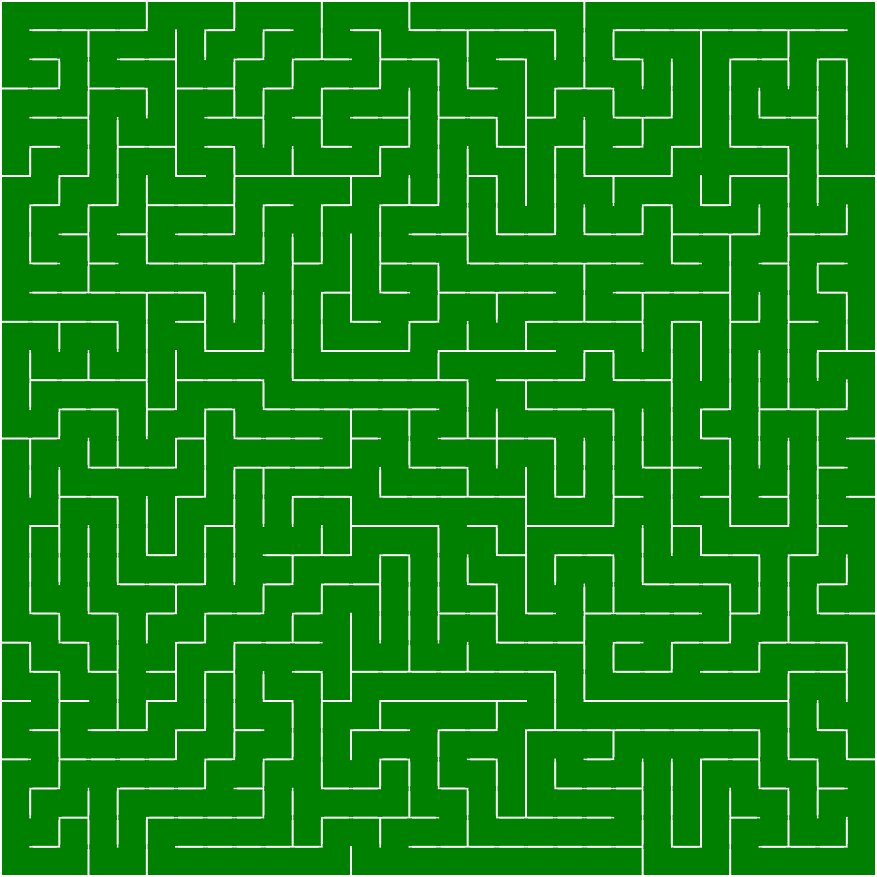
The Depth First Search (DFS) algorithm begins by setting up a grid, where each cell is surrounded by walls. Initially, it is fully enclosed, with no passages between any of the cells, creating a solid block.
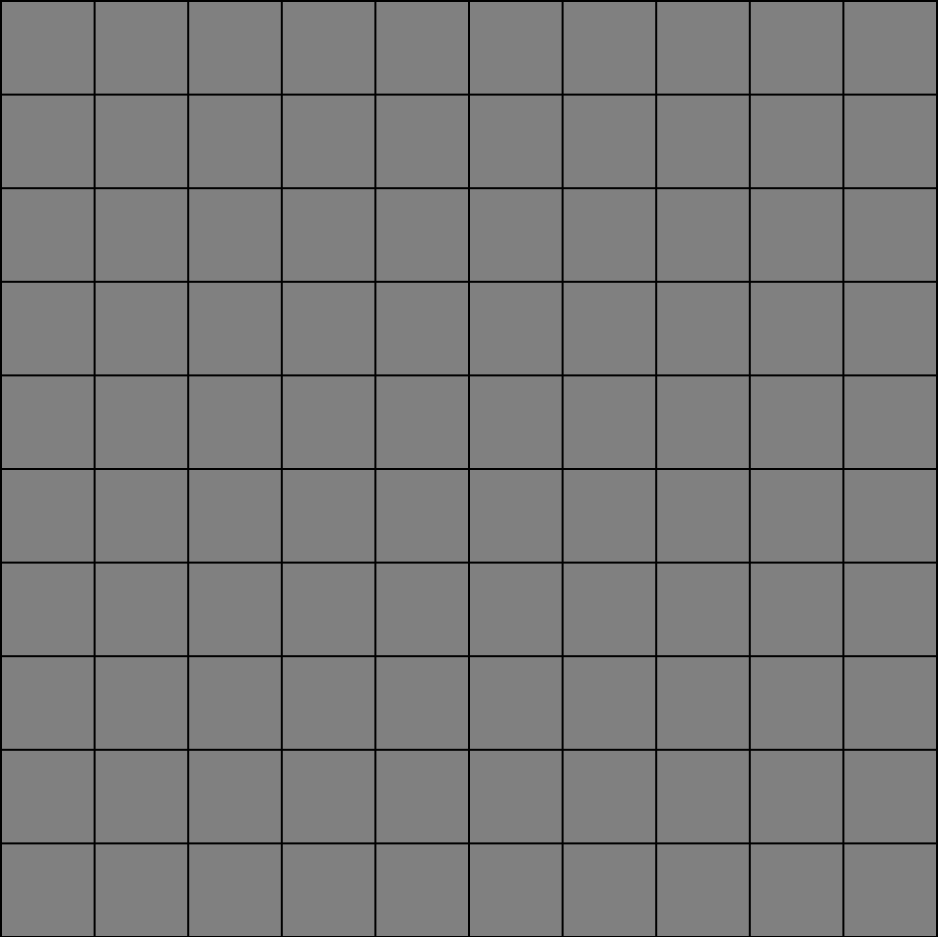
To start the maze generation, a random cell within this grid is selected. This cell serves as the starting point. The algorithm marks this cell as visited, which is essential for tracking progress and ensuring that none of the cells is revisited.
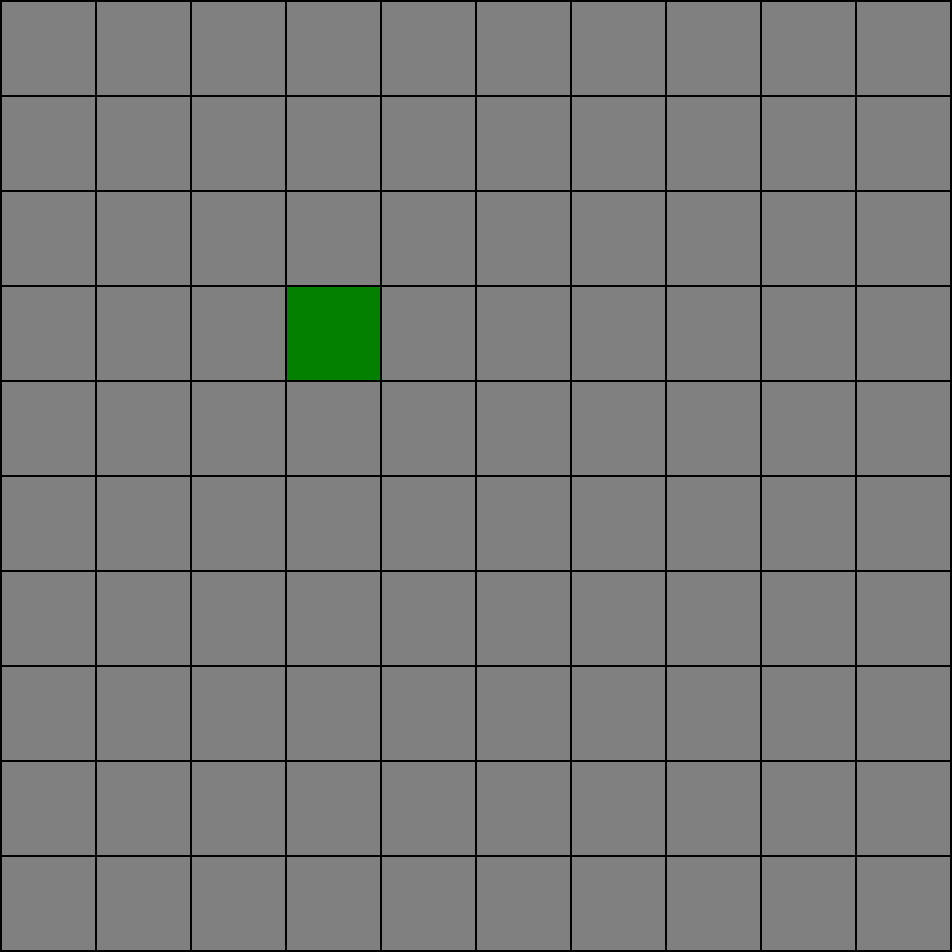
The next step involves identifying all neighboring cells of the current one. These neighboring cells are then shuffled randomly to introduce unpredictability in the maze’s layout.
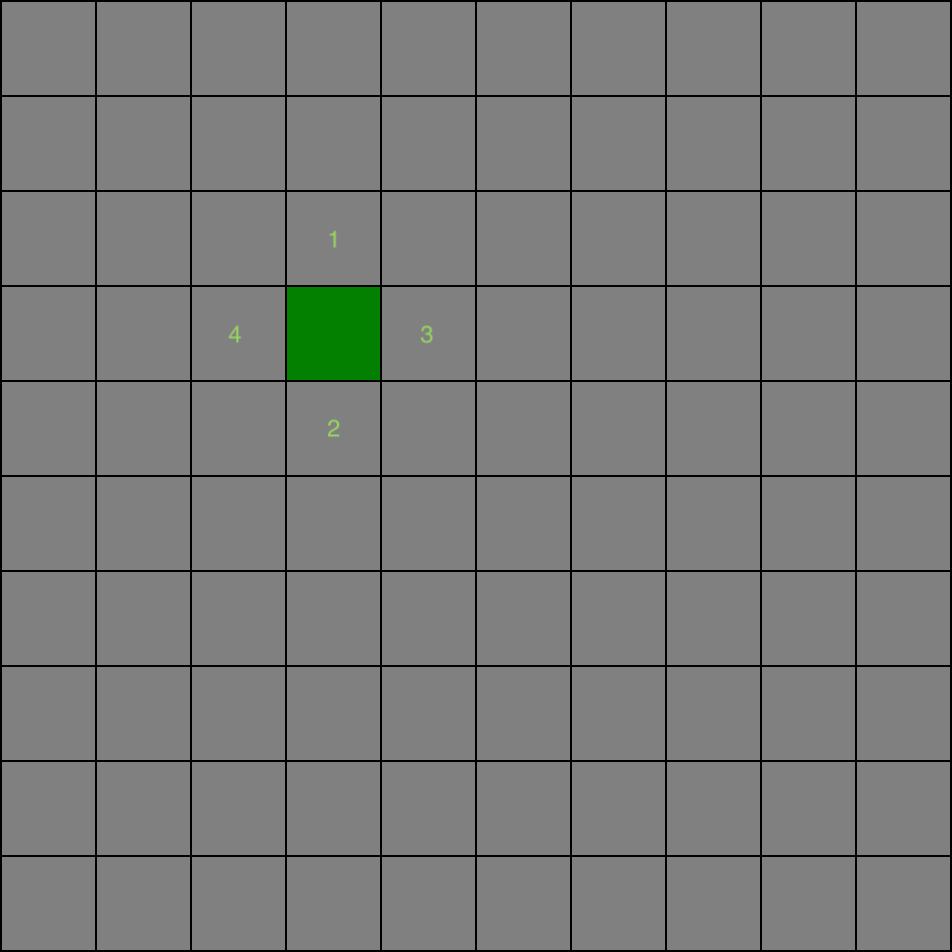
Then each of the neighbours is entered separately starting from no. 1. When the neighbour is entered it is marked as visited and the wall between previous cell and the current one is removed. After doing that another neighbouring cells are randomly shuffled. In the given case fourth cell will be omitted when all of the remaining cells are entered as it was already visited.
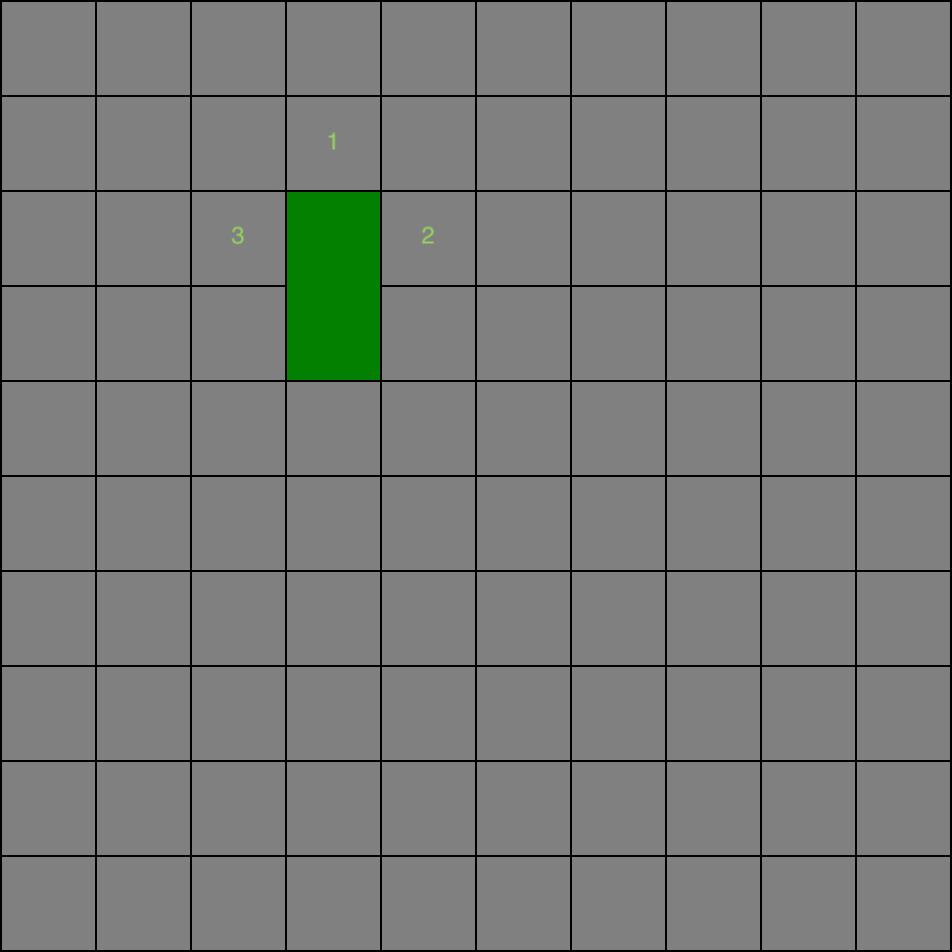
The same process is repeated for the subsequent calls. If the cell is located on the border then the number of the neighbours will be limited to the cells present on the grid which were not entered yet.

When one of the paths is fully resolved (the algorithm had been entering the neighbour of the neighbour and reached the most end), then algorithm goes back to the previous cell and enters the remaining neighbours. The given example shows the completed path for the first neighbour, all of the paths have been resolved there so now it will redo the same logic for the second one.

Solving all of the paths results with complete maze.
